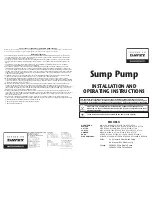
-25-
1.6
Safety devices
Great attention was paid to the safeguarding of opti-
mum working conditions right from the early devel-
opment stage of this new system. A wide variety of
mechanical and electrical safety devices, ergonomic
principles and measures to reduce noise and dust
emissions were employed. In accordance with the
European Standards and with regard to the required
protection devices stipulated by the use according to
intended purpose, the system is protected against
dangers which could not be eliminated by its design.
The protection devices are in particular:
Protection against contact with the saw blade:
In accordance with the requirements in
EN 50144-2-5 the tooth rim of the saw blade is
completely covered by protective guards in the
starting position, down to the tooth bottom. Dur-
ing sawing, the tooth rim of the saw blade not
required for cutting is covered (above the guide
track) down to the tooth bottom.
During sawing, the riving knife / splitter makes
sure that the tooth rim cannot be touched unin-
tentionally. After the sawing and the contact with
the sliding bar adjustable with respect to the
lengths of cuts, the saw blade automatically
returns to its home position and is locked. This
lock prevents the saw blade from coming out of
the initial position unintentionally.
Movement of saw assembly:
The forward momentum of the saw assembly is
controlled via a switch with automatic set back,
i.e. letting go leads to immediate interruption of
the cut.
When the sliding bar for the adjustment of the
cut lengths or the end of the guide track resp.
the guide track extension are reached the for-
ward momentum is automatically shut down.
During backwards movement into the starting
position, the movement also is shut down auto-
matically when this position is reached. A rubber
cushion makes sure that the hand cannot be
caught between saw assembly and control
panel.
Devices to counteract moving during sawing:
Cellular rubber strips arranged on the bottom of
the guide track guarantee a stable position of
the entire panel saw system also on smooth sur-
faces.
The use of two cross fences, available as
optional accessories, can additionally secure
against moving.
Switching equipment:
Releasing the rocker switch leads to standstill of
the saw assembly and the forward momentum.
Depending on the material and on the saw
blade, a change of the feeding rate between 4
and 20 m/min (13.1 and 65.6 ft/min.), achieved
with the help of a rotary switch, leads to an opti-
mal cutting result.
The cutting movement itself is controlled via a
switch with automatic set back.
This switching equipment can easily be reached
in the control panel.
Ergonomics:
Essential ergonomic principles taken into con-
sideration for the design of the machine:
easily accessible switching equipment
arranged directly at the location of the user,
clearly informing scales on all devices for
the adjustment of forward momentum and
cut depth,
a diagram on the control panel explains the
best combination of saw blade, forward
momentum and material to be worked on.
the saw assembly runs in the guide track in
such a way that the right edge of the track
also indicates the position of the cutting
edge of the workpiece. Thus laborous
marking becomes unnecessary,
the user no longer has to walk along the
machine when sawing,
easy to transport thanks to little weight and
separable guide track,
only one service tool for all functions
arranged in a holding device on the system.
Chip removal:
During the entire cutting, chips are routed via a
built-in and closed chip duct from the saw
assembly to the extractor connection located at
the front end. This means the system can be
connected to an external extractor unit, such as
an industrial vacuum cleaner or a combination
unit (combined dust extractor / industrial vac-
uum cleaner). Operation without chip / dust
extraction is not recommendable. If you still
work without chip / dust extraction for a short
period of time, the adapter and the connection
hose at the cover of the saw blade must be
removed.
















































